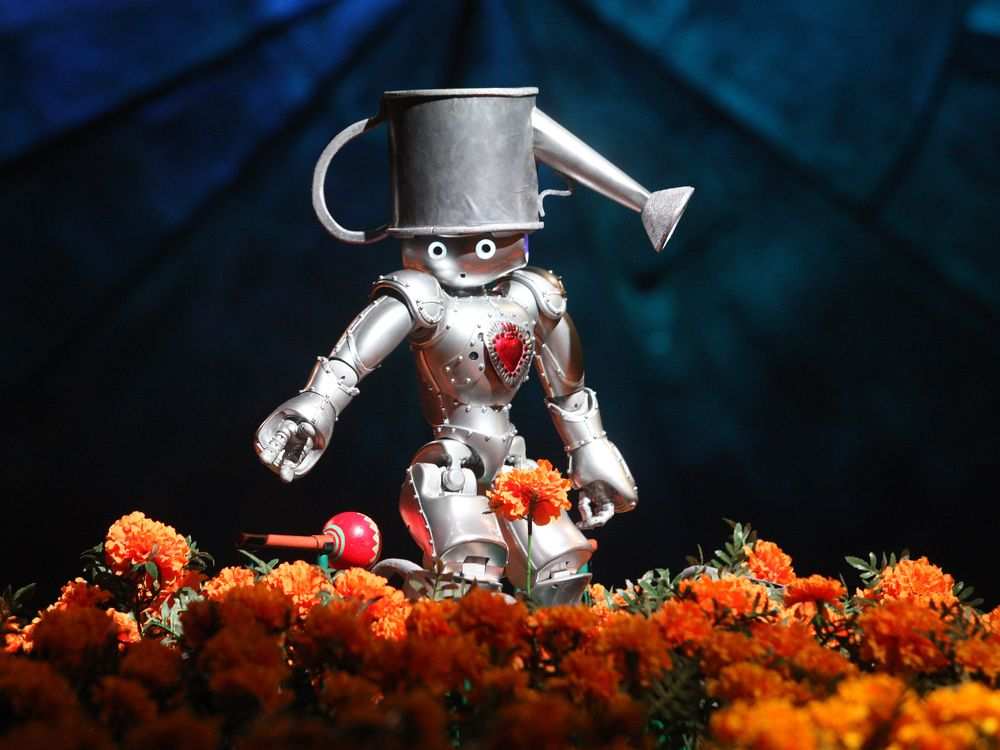10 Ways Circus Is Getting Hi-Tech & 5 Tips to Get Tech in Your Work
Since the technology boom in the 1990s, technology has been changing the way people live, communicate, work, and do business. From social media to smartphone applications, from virtual and augmented reality to drones, new technology is being developed every day. As a society, we have developed an immeasurable appetite for new technology in all facets of life. This has naturally bled over into art and entertainment. An increasing number of circuses and individual performers are incorporating technology into their shows as a method of engaging new audiences and developing new, relevant work.
Based on my work with Dream Rippled Productions, I have the opportunity to facilitate the seamless inclusion of technology in to many circus productions, and I also have gained insight in to how tech can be best used to augment one’s work rather than complicate it. So I provide here 2 listicles on the subject: 10 Ways Technology is Being Incorporated into Circus & 5 Tips for Incorporating Technology into Your Work.
10 Ways Technology is Currently Being Incorporated into Circus
1. Projection Mapping
Projection mapping is when a video or image is projected onto something other than a flat screen. The projection is manipulated to the shape of the projection surface. Here is an example of one of our Dream Rippled Productions which uses this technology called Cracked.
2. LEDs

LEDs are being built into costuming, props, staging, and circus equipment. They can be programmed to certain colors or designs.
LED Aerial Sphere in Ringling Brother’s Out of This World.
Photo credit: Out With the Kids Blog
3. 3D Printing
3D printing uses special printers to create three dimensional objects from a computer model. Some circuses are 3D printing costume pieces and props. There are many types of materials that can be used in the printing process. This includes materials that are soft and flexible, which in turn can be used to create a duplicate of another item that would normally not be flexible (for example a costume accessory that can be made to bend with a performer).
4. Live Audience Interaction
Some performers are using technology to break the fourth wall and interact with their audience live. This includes smart phone applications that ask audience members to do certain tasks during the performance, augmented reality, and live social media interaction on stage. You can read about my experience with the Quand La Foule Devient Cirque app that was apart of this year’s Montréal Complètement Cirque Les Minutes Completement Cirque, as well as a few of my thoughts on it’s usage in circus, on Spider Web Show. Augmented Reality in Montreal Completement Cirque’s Numeriques looked like this:
Here’s an exampleof the smart phone app for Toruk.
5. Live Video Feeds
Use of an on-stage camera to feed a live video to a projector.
This can be used to give the audience a different perspective of the performance.

6. Color Changing Costumes, Props, and Make-up
Here is an example of Dream Rippled Productions Color Change Dress Demo:
7. Drones
Photograph courtesy of Richard Termine, Variety Magazine
Lamp shade drones in Cirque du Soleil’s Paramour.

8. Holograms
A hologram is a recording of light dispersed by an object, that is then used to create a three-dimensional image of it. Cirque du Soleil uses a hologram to create a three-dimensional image of Michael Jackson on stage in their show Michael Jackson One.
One of the main things that separates circus from other art forms and other forms of entertainment is the human performer. Think about the goal of your act. Losing the performer to technology will leave you with nothing more than technological spectacle.
9. Robots
Robotics are being used directly on stage, as well as more subtly in costumes and props. Robot in Cirque du Soleil’s Luzia.

10. Innovative Uses of Rigging
Although not a specific piece of new technology, some companies are using rigging in new ways to enhance storytelling, such as this levitation act in Reveurs Definitifs.
The circus industry is developing and implementing technology into shows as a method of keeping the art form on the cutting edge. I only covered a few examples of the growing number of technologies being used. Can you name other technologies that you’ve seen in circus? In my following article, I’ll share five tips for incorporating technology into your work.
5 Tips for Incorporating Technology into Your Work
1. Think of Technology as a Tool, Not an End Means
At Dream Rippled Productions, we are storytellers. At the heart of our work is a story that we are trying to convey in live performance. Our process for incorporating technology first starts with the story that we want to tell. In the projection mapping act Cracked (see video clip above), the character in the act was inspired by Alice in Wonderland’s Cheshire Cat. In thinking about the character, we were inspired by his ability to bend reality through appearing and disappearing. After determining that this was a concept that we wanted to show live, we entered a research and development period. First, by researching different technology and coming up with some potential ideas that we think may be possible to achieve our concept. Then, by exploring, experimenting, and developing different pieces of technology we get to see if it is possible to do what we want it to do, and whether or not it is feasible to put it in front of a live audience.
One of the main things that separates circus from other art forms and other forms of entertainment is the human performer. Think about the goal of your act. Losing the performer to technology will leave you with nothing more than technological spectacle. If that is not what you want to achieve, start with the story, the emotion you want to evoke, or the character that you are trying to embody. Your incorporation of technology will be more successful if you build it into your work in a meaningful way, instead of putting a piece of technology into the show and building an act around it.
2. The Age of the Remix
You don’t have to work with brand new technology. There are plenty of things that were never developed for art and entertainment that can be used in different ways to create something brand-new. At Dream Rippled Productions, the process we used to create the color change costuming, make-up, and props (see above video clip for an example) is not new. This concept was developed as an enhancement for acts that use other innovations such as rain walls and other water sources to convey water as a source of life. Some of the construction techniques have been used in other industries for years. Technology doesn’t have to be complicated, expensive, or new.
3. Make Strategic Partnerships
No one expects you to be an expert on everything. Just as you may collaborate with an expert on rigging or lighting, look into partnering with people who are experienced with the technology that you want to use. Maker spaces (centers that give space to people who are passionate about creating) are popping up everywhere, and they are a great place to start. Most offer classes or opportunities for mentorship on a piece of technology. You can also find people who are working with 3D printing, robotics, laser cutting, and more. There may be a club or an individual person who is interested in collaborating with you to bring your project to life. Don’t lose sight of the fact that you are an expert with circus and human connection in live performance. Your partnership should be a true collaboration. Again, you don’t want to end up with a piece of technology that someone else has built without the understanding of how to integrate it into a live performance, or you’ll end up randomly shoving it into the show with no integration to the performance.
4. Develop a Practice of Accepted Failure
As with all creation, there will be failure. You may make dozens of failed prototypes. You may develop something that works, only to encounter another problem. Understand this going into the process. Make space for accepted failure, and embrace it. Your best innovation just may come out of a failure.
In early 2015, we started working with the concept of circus props that can be manipulated to change their shape. Since that time, we’ve developed dozens of prototypes that have failed. Although we’ve designed costumes that change shape, the props have proven to be much more complicated to achieve the concept in the exact way that we want. It’s been more than two years of failed designs, but we’re close. We hope to unveil the finished, fully working design this year. If we had given up after the first couple of prototypes, we would have never come as far as we have with what we think is our most exciting project to date!
5. Be Realistic with Your Goals
There is a saying in business. Good – Fast – Cheap. Pick two, because it is impossible to have all three. You do not have to go into a technology project with a huge budget. Our project Cracked we had a budget of less than $100. As technology becomes cheaper and more accessible, it is possible to develop technology for circus at a low cost. However, if you pick cheap due to necessity, you only get to pick one more. If you have a short timeline for creation, be cognizant of the fact that when you choose fast, you are making a conscious decision to sacrifice quality. If you have a small budget and a short timeline, perhaps this is not the time to incorporate technology. People who work in the circus industry are already very creative. Coming up with ideas may be the easier part of the task. The execution of those ideas is key, and can make or break your project!
We are on the cusp of a new era where much of circus will be driven by technology. If you choose to implement technology into your performance, be intentional with its application. The deciding factor on which shows will be remembered and those that will be dismissed will be largely based on how technology is utilized and whether or not the originally human driven aspect of the art form is lost.
...Do you have a story to share? Submit your news story, article or press release.






